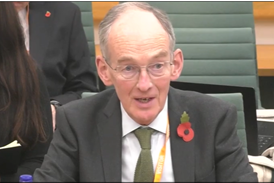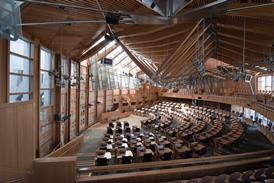Thousands of people have had their calls answered in 30 seconds since HM Courts & Tribunals Service opened centralised hubs, the government said today.
Two centres were opened in Birmingham and Stoke-on-Trent at the start of the year. The Ministry of Justice said 30,000 people whose cases were dealt with under the Single Justice Procedure were answered in 30 seconds whereas previously they might have waited up to five minutes.
The Single Justice Procedure, introduced in 2015, allows defendants accused of summary-only, non-imprisonable, 'victimless' offences to be tried and sentenced on the papers by a single magistrate without a hearing. The ministry said the 30,000 calls related to Transport for London, TV licences, and car tax and insurance offence cases.
As well as average waiting times falling, the ministry said 2% of callers now hang up before their call is answered; before it was 38%. A direct line was set up for Welsh speakers.
The service centres now handle all enquiries about non-police prosecutions under the Single Justice Procedure, including cases brought by councils, train and tram companies, the DVLA, Environment Agency and Natural Resources Wales.
HMCTS plans to open a centre in Loughborough next year and one in Greater Manchester in 2021.
Jonathan Wood, HMCTS national services director, said: 'It’s encouraging to see that the changes we made to the way we work are already improving the experience of the people who use our courts. We are answering calls more quickly while providing better quality support specific to callers and their cases.'
In written evidence submitted to the House of Commons justice select committee's open inquiry on HMCTS's reform programme, the Public and Commercial Services Union said it went into dispute over 'the employer’s failure to consult with staff about the introduction and movement of work into the first two CTSCs in Birmingham and Stoke-on-Trent'.
The trade union said its concerns 'included HMCTS management advertising for roles without the necessary redundancy avoidance measures having first been agreed and existing staff being required to make a decision on their future before they were clear on all the options available to them'.



























15 Readers' comments